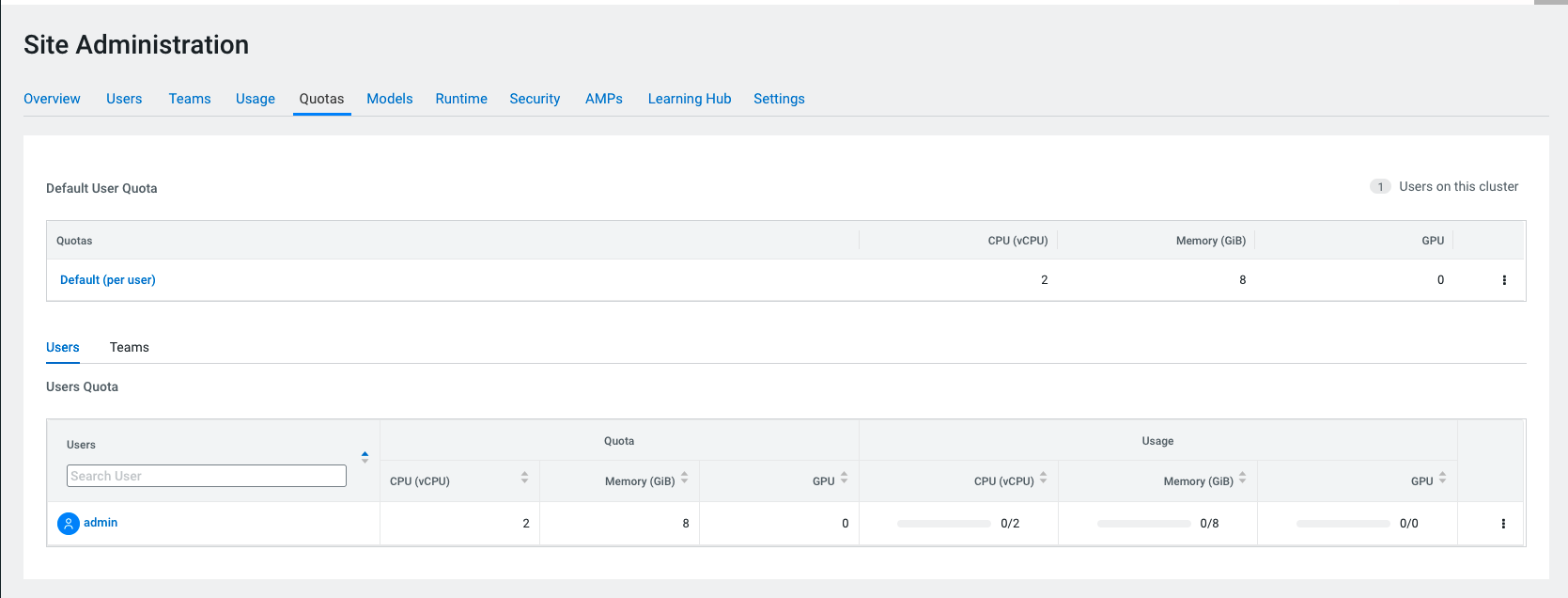Quota for Cloudera AI workloads
Quota management is implemented for both user and group level. A Cloudera AI Workbench is allocated a set amount of resources based on configured parameters at provisioning time. Within a workbench, resources available for workloads can be further subdivided into quotas at user and/or team level.
User and team naming limitations
- The name must be 63 characters or less.
- The name must begin and end with an alphanumeric character ([a-z0-9A-Z]).
- The name can contain dashes (-), underscores (_), dots (.), and alphanumerics, except for the beginning and ending characters.
User quota
By default, 8 GB memory and 2 vCPU cores are configured for each user. Such resources are sufficient for running simple sessions but might not be sufficient for the spark workloads if the executors cannot find enough resources. The Cloudera AI administrators can configure custom quota for the user on the Site Administration Page.

If the quota for a user is used up, the workload remains in the pending state until the required resources are available.
If the quota for the users is modified, it will be reflected when the next workload is submitted.
GPU resources can be edited if the workbench is provisioned with GPU resources.
Group quota
There is no quota configured by default for a team or group.
- As a Cloudera AI administrator configure a custom quota for a group under tab.
- Configure a quota for a group, at the Quotas Teams tab.
- Click the Add Team Quota and a popup enables you to add a custom team quota.

If the quota for the group is used up, the workload remains in PENDING state until the required resources are available.
If the quota for the group is modified, it will be reflected when the next workload is submitted.
Quota enforcement
The resources are allocated based on the project context from which the workloads are created.
- If a workload is created in a project, which is developed in users' context, it will always take the user quota.
- If a workload is created in a project which is developed in a team's context, it will take resources from the team's quota, provided the team has a quota configured.
- If a workload is created in a project which is developed in a team's context and the team does not have a quota configured, it will take the resources from the users' quota.
